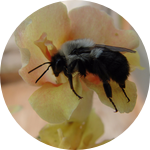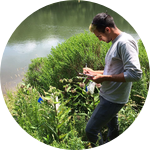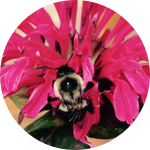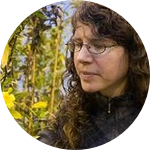About This Project
Bees depend on nectar and pollen for food. We have discovered that natural nectar and pollen chemicals can reduce bumble bee disease. Plant interactions with other species, such as pests that damage leaves and beneficial soil fungi, can change nectar and pollen chemistry. By manipulating leaf damage and beneficial soil fungi, we will determine whether these common interactions produce nectar and pollen that reduce bee disease.
Ask the Scientists
Join The DiscussionWhat is the context of this research?
Native bee species contribute millions of dollars to US agriculture annually and provide resilience against possible loss of honey bee pollinators. However, native bees, just like honey bees, are exposed to a wide range of stressors including disease that can reduce populations. Our research has found that the chemical composition of nectar and pollen can strongly affect a common bumble bee gut disease, Crithidia bombi, as well as a honey bee disease, Nosema.
The compounds we study are considered plant defenses, and often increase in response to damage. Plants may also be able to protect themselves better when they associate with beneficial fungi that help take up nutrients from the soil. Thus, a wide range of interactions may shape the benefits that plants provide to bees.
What is the significance of this project?
Our findings that nectar and pollen chemistry have large effects on bee disease suggest great potential to improve bee health through choosing plant species that provide medicinal benefits.
Above and beyond this, though, farming practices could affect the medicinal quality of bee food sources. Small amounts of leaf damage could increase production of medicinal compounds in flowers, as could commercial beneficial fungi added to soil. This project is an entirely novel consideration of how these common interactions may "scale up" to affect bee disease.
What are the goals of the project?
The goal of this project is to test the novel idea that plant interactions with other species can affect bee disease by changing floral chemistry. We will use tobacco as a host plant because it has very high production of nectar containing nicotine, which reduces bee disease.
We will conduct two experiments, one manipulating leaf damage using tobacco hornworms and the other manipulating access to beneficial soil fungi. In both experiments, we will collect nectar and pollen from control and treated plants to feed to experimentally infected bees. After one week, we will assess disease load to determine whether leaf damage and/or soil fungi reduce disease. We will also chemically analyze nectar and pollen for nicotine and other chemicals to assess mechanisms underlying effects.
Budget
We have all the laboratory equipment, greenhouse space, vials and pots to conduct the experiment. However, we will grow 500 plants in gallon pots, which requires a lot of soil. Each bee tested in the lab requires disposable lab supplies, such as pipette tips, microcentrifuge tubes, and slides to mount wing samples. Bee colonies are donated to our lab, but each costs a $60 overnight shipping fee. Finally, we request funds for chemical analysis of nectar and pollen by a collaborator.
Endorsed by
Meet the Team
Lynn Adler
I am an evolutionary ecologist who studies plant-insect interactions. I’ve been fascinated by plants and bugs since I was a little kid, and am still amazed I have a job that pays me to play with them. I’ve worked in wild, agricultural and urban habitats on a wide variety of systems, but for the past five years I’ve been studying how floral traits affect bumble bee disease. I’ve been collaborating with Dr. Rebecca Irwin since I became a professor 15 years ago.
Luis Aguirre
I am currently a first-year PhD student in the Adler lab at UMass Amherst. I am interested in how plants interact simultaneously with mutualists and antagonists. I study how plant damage affects nectar chemistry, and how changes in nectar chemistry modify interactions between plants, pollinators and pathogens of pollinators. In the future, I plan to investigate how nectar chemistry affects the structure of pollination networks. I am also a writer and managing editor for That’s Life Science Blog (thatslifesci.com).
jd
Rebecca Irwin
I am a pollination biologist. I fell in love with bees and flowers of the Colorado Rocky Mountains and have been studying pollination biology ever sense. I study the effects of global environmental change on pollination mutualisms as well as seek to develop sustainable solutions to conserve bees and their flowers. I have been lucky to collaborate with Dr. Lynn Adler for over 15 years.
Lab Notes
Nothing posted yet.
Project Backers
- 26Backers
- 33%Funded
- $689Total Donations
- $26.50Average Donation




